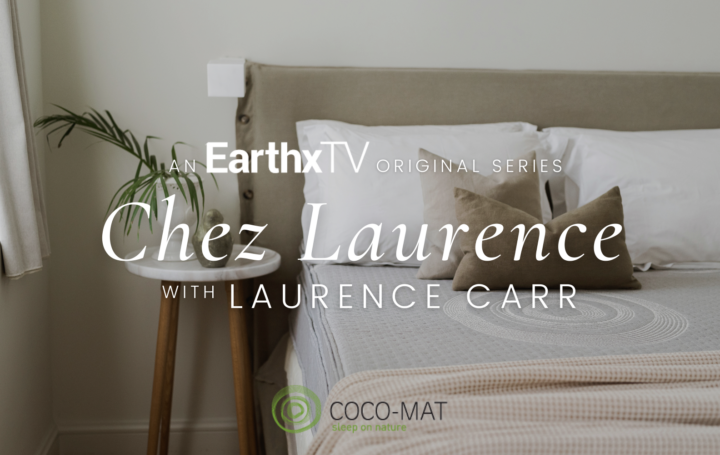
Imagine our intentionally considered and well-appointed homes, brimming with our loved ones who come, relax, and luxuriate in deep breathes of. . . chemicals. Formaldehyde, benzene, trichloroethylene and carbon monoxide, to be exact.
Let us rise with one voice insisting, “Non! Absolument pas.” A valued life necessitates valuing toxin-free breathing experiences for all, compelling us in our advocator role of wellbeing to demand distinction from our indoor spaces.
Co-habitating with toxins? Absolutely no.
In complications, as in life, the fundamental first step forward begins with simple consideration, in this case, a fair assessment of what industry experts have tagged with the identifier: VOC (volatile organic chemicals). VOCs initiate a chemical creep into our indoor sanctuaries by evaporating at room temperature and polluting our breathing space with their remnant particles, having emitted from some of our daily moisturizers, perfumes, cleansers and other such essentials.
How to remedy the condition of our air? Let us begin with one notion we embrace unreservedly: use natural products.
We already look for the most natural products to use in our homes and for our loved ones, but an awareness of VOCs brings our attention to the disharmony happening between even organic materials. Who would have considered that the natural compounds in our facial cleansers can interact and actually formulate toxins we would not have suspected—like ammonia. While ammonia is not listed by the EPA as a VOC since it does not react with sunlight and promote smog, everyone knows it is not good to breathe.

We imagine ammonia appearing in soil and plant products but natural facial cleansers? In fact, many personal care products contain a form of ammonia—it is known to be added to shampoos and body wash for thicker lather for instance. To avoid it, be sure to look not only at labels, but also ingredients, like this listing for a safer skin refiner. While it is listed as a “clean, organic, bio-fermented tonic infused with lactic acid,” the proof is in the ingredients list, available right under the product and shown to include safe ingredients from wheat and rye to lemon juice.
Next, we cast our attention to new industry innovations that add ventilation—and measure! Indoor Air Quality (IAQ) monitors are a must-have to track chemical particles polluting our indoor spaces. Remember, VOCs include chemicals that are organically based and tend to react and create new chemicals when coming into contact with other chemicals. All of this calls for better measurement of our air quality, since keeping our windows and doors open for natural ventilation is possible only when the weather works in our favor. Choose an IAQ that measures relative humidity and dust measurements, as well as an index with VOC indicators that will track pollutants. Our monitors should also have a carbon dioxide sensor. This Air Mentor 6 in 1 is a good option, although it has not been optimized for American use (temperature reports its degrees in Celsius).

Although deploying the exhaust fan in our kitchen or restroom improves ventilation, consider installing a heat or energy recovery ventilator, especially in homes with better insulation. These ventilators remove stale indoor air and pull fresh air into the home. They transfer heat from the stale air to the fresh air in winter and cool the air in the warmer months.

Another contender to move the needle on VOC contaminants is to avoid harmful chemicals. Certainly, we are all avoiding the most obvious harmful chemicals in our home, but the concerns around VOCs will raise our awareness about chemicals we may not have considered—like our regular dry-cleaning. Perchloroethylene is the chemical most widely leveraged in dry cleaning. Recent studies have found that regular dry-cleaning customers breathe low levels of this chemical where dry-cleaned articles are stored and also as they wear dry-cleaned items. Inquiring of our dry cleaners about their process and what chemicals they use, is a good choice since many save money by recapturing the perchloroethylene during the dry-cleaning process and re-use it, but are then able to remove most of the chemical during the pressing and finishing of the garments. A tip from the experts: if dry-cleaned articles have an odour or chemical scent when we pick items up, refuse to accept the articles until they have been properly dried.
Another chemical to consider: benzene, which is a byproduct from indoor tobacco smoking. As if it weren’t important enough already for our family to eschew the practice of smoking, this is one more reason to avoid it in every way. Other chemicals to circumvent are those in cleaning products, easily eluded if we chose ideas like lemon juice and olive oil as a healthy wood polish or a few drops of tea tree oil mixed with water that helps prevent mold and mildew in the bathroom.
Last but not least, we turn to our industrious comrades: plants, plants and more plants. As well we should, for many reasons even beyond VOCs, asserts a study conducted by Texas A&M University. Its research reveals that live potted foliage and flowers can boost creative performance and even cognitive skills for problem-solving efficiencies. Kansas State University researchers go one step further, asserting that potted plants help us heal faster from injuries and post surgery, saying plants are a verifiable “noninvasive, inexpensive, and effective complementary medicine for surgical patients.”

Beyond boosting morale, there’s the core VOC protectant we crave from plants, since they actually absorb toxins from the air, thanks to phytoremediation. Phytoremediation is a plant’s ability to remove harmful toxins from the air by absorbing these gases through their leaves and roots, thereby neutralizing VOCs at their base.
As ambassadors of our indoor spaces, creating an environment favorable for thriving is what we set out to accomplish. It serves us well to take every meaningful precaution and advocacy to diminish air toxins as we are able—and we suitably are able—to offer our loved one’s spaces that maximize calm respite and rejuvenation. With these tips, we can offer that and more including the deeply cleansing, pure air around them.







